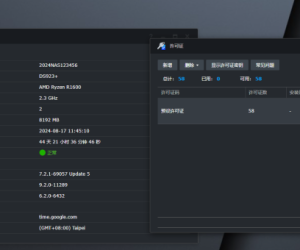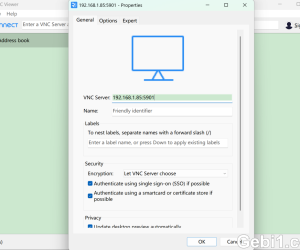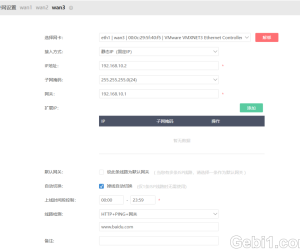[家庭影院/碟机] HTPC的高效能mini ITX 平台----Intel DG45FC |
|
HTPC的高效能mini ITX 平台---- Intel DG45FC
最近比较关注DG45FC主板,我计划将购买该主板。虽然已经有认识的朋友采用DG45FC主板组建了HTPC,但是我自己在购买之前,还是比较关注国外有价值的参考信息,不会轻易相信国内那些某些网站的商业写手们的文字。我把所看见的部分资料、信息分享在这里,以供一些有兴趣者参考(不属于那些言必称“游戏成绩”、言必称“超频”者)。 作为IGP 的 Intel 主板来说,DG45FC及DG45id 的HD 视频播放的实用性能已经大有提高(相比G965),达到了实用化的程度,它的常规2D 显示质量也不用担心。DG45FC 具有Intel 主板的品质、mini ITX 尺寸(17x17cm),实现机箱小型化,这对于HTPC 更有价值。DG45FC 属于Intel Meida 系列,这个系列仅次于Intel 的顶级桌面主板系列,它提供了eSATA,RAID,HDMI ,数字音频光缆连接等功能,在音频方面它有很高的规格,包括Dolby TrueHD 和 DTS HD-MA。这些功能在Intel 的经典系列(Meida 系列以下级别)主板上是不提供的。还有非常重要的一点,DG45FC 组成的系统可以做到耗电功率不高。 关于DG45FC 详细规格资料请直接检索Intel 网站资源,本文不予重复: http://www.intel.com/cd/products/services/apac/zho/desktop/motherboards/393075.htm http://download.intel.com/support/motherboards/desktop/dg45fc/sb/e3002601_cs.pdf http://download.intel.com/support/motherboards/desktop/dg45fc/sb/e35964001us.pdf Lawrence Lee 于2008年9月份得到了正式上市版本的DG45FC,他做了部分测试比较。正式上市的最小版本号是AA E27730-305,9月底实际批量销售的已经是AA E27730-306版本。而此前关于DG45FC的传闻大多只是基于Intel DG45FC 工程样品的展览,那些传闻者并且没有实际应用(未提供外界试用)。从图片可以看见,9月之前的工程样品与9月中旬开始实际上市的产品有明显的不同,后者作了较明显的设计更改,并且产品的BIOS 及驱动均作了更新。 Intel 于2008年3月发布了DG45主板的规格,8月下旬上市了DG45ID、然后9月下旬上市了DG45FC。 Lawrence Lee 完成应用测试后的总结: Overall we are impressed with the G45 chipset. While the X4500 IGP represents only an incremental increase in both 2D and 3D performance over the G45, power consumption was much improved. We would love to see Intel make G45 their defacto chipset rather than the woefully outdated and inefficient G945 chipset used in the desktop versions of Atom boards. The G45 chipset would have made Atom-based solutions truly killer. The potential power savings would improve battery life in mobile devices and the vastly superior graphics subsystem would help make up for the Atom's lack of processing power when playing multimedia. Lawrence Lee 写道: “总而言之,G45 芯片组给我们留下深刻印象。虽然G45 系列的X4500 IGP(整合图形处理器) 在2D 和3D 方面表现着性能提高,功率消耗却大有改进。我们很高兴看见Intel 使得他们的G45 芯片组远胜于桌面Atom主板所使用旧的、低(能源)效率的、可怜的G945 芯片组,G45 芯片组将成为Atom 主板系统真正的杀手。潜在的:G45 的节能性能会提高移动设备的电池使用时间,并且在多媒体播放方面高级图形子系统会有助提供Atom 所没有的性能”。 However a motherboard is not just a chipset - the manufacturer is key in how the finished product ultimately ends up. While the DG45FC is more of a consumer/enthusiast product, it is still mainly a business-oriented Intel workhorse. The BIOS is completely locked down, and the fan control system is primitive. We should also note that the board does not support quad-core or older high TDP dual core CPUs - this may be a power regulation issue as there might not be enough room on the PCB to fit all the electrical components required to handle a high power processor. Despite these quibbles, for a mini-ITX mainboard, the Intel DG45FC probably has no current equal. It has a vast feature-set including 4 SATA ports, gigabit ethernet, and eSATA, and a wealth of digital outputs. Its $130~150 price-tag is quite reasonable - mini-ITX gear generally goes for a large premium, but the DG45FC is only marginally more expensive than equivalent mATX motherboards. Paired with a Wolfdale processor and an efficient power supply, the DG45FC is an excellent choice for a powerful yet energy-efficient mini PC. Lawrence Lee 写道: “尽管有些微词,而作为一款mini-ITX 主板,或许Intel DG45FC 当前没有对手”。 “作为一台功能强大的并且能源效率优良的 mini PC,DG45FC 是一个极好的选择,配置一个Wolfdale (双核)处理器和一个高效率的(80 Plus)电源”。 (笔者注:国内某个内资企业主板供应商虽然于8月份发布了780G mini ITX 主板消息,并且预计定价远远高于 DG45FC,但目前国内零售市场上尚未有货)。 这里顺便提醒国内DIY 爱好者,如果你想购买真正的80 Plus 认证合格的电源产品,那么建议你首先浏览 www.80plus.org,核查产品型号,而不是轻信那些国内某些鱼目混珠的商业文字宣传,避免成为冤大头高价买来 伪80 Plus 电源产品。 左面为工程样品原形,右面为实际上市的产品(不含南桥散热片): dg45fc.jpg(380.88 KB, 下载次数: 16)
DG45FC+E7200.jpg(277.15 KB, 下载次数: 2) E6400 和 E7200 [url=] 17587.png(25.05 KB, 下载次数: 0) Q9300+G45
17588.png(25.49 KB, 下载次数: 0) Q9300+G45
17589.png(26.67 KB, 下载次数: 0) Q9300+G45
17590.png(26.15 KB, 下载次数: 0) Q9300+G45
17593.png(27.92 KB, 下载次数: 0)
17594.png(27.72 KB, 下载次数: 0)
HTPC的高效能mini ITX 平台----Intel DG45FC (3)2. 不仅HDMI ,DG45FC的音频处理与支持规格是目前最高的,包括Dolby TrueHD和 DTS HD-MA。Intel 网站的个人Blogs 上,Aaron Brezenski 的日志中特别谈到有关G45 的HDMI 中继问题,这也是某些人借以责难的口实,但这不是Intel 的过失。 Aaron Brezenski 在8月14日谈到: I understand the reason: the standard COPP protocols that all of these players use do not support the use of repeaters (even though our competition appears to be ignoring these strictures), and the software players don't yet use OPM (which does support repeaters). This is all very well and good, and we're probably in the right on this regarding supporting the spec: but the end user doesn't see this. They see our competition's graphics working flawlessly with their software player on their shiny new Onkyo or Yamaha receiver, and Intel's failing. The successful 7.1 LPCM tests I mentioned above were done using gray-market AACS-stripping software. “所有的播放器采用的COPP协议都不支持中继模式(尽管我们的竞争对手倾向于无视这些规则限制),并且播放软件还没有使用OPM来支持中继模式。这样做也许更好,我们或许处于正确的一方:但终端用户却无法明白。他们看到我们的竞争对手的图形处理器以他们的播放软件可以完美的运行,对于安桥、雅马哈的新款功放设备,而英特尔的却不行。我前面提到的LPCM 7.1测试成功,就是采用了一种AACS-stripping黑市软件”。 The G45 is really the perfect home theater chipset (at least until such time as it is superceded by one which can transmit Dolby TrueHD and DTS HD-MA... that's a topic for another time) and the motherboards we're putting out using it are elegantly designed (the DG45FC is a thing of beauty). 但 Aaron Brezenski 也同样说: “G45确实是一款完美的家庭影院芯片组(至少直到现在能完美的支持Dolby TrueHD和 DTS HD-MA),我们利用G45芯片精致地设计了主板(DG45FC是一件优美的产品)”。 Aaron Brezenski 在8月15日谈到(有人在他的Blog 发表读者意见之后): Next, the repeater mode issue is, as I suggested above, being worked by our teams. My understanding after speaking with some of the Intel chipset marketing and engineering folks is that Intel is working with the key media player vendors to support repeater mode. The fact that it's not there today does not imply the hardware is incapable in any way, just that the support for it is a work in progress. I thought I'd made that clear but I'm hearing rumblings it's being touted as a weakness in the chip based on my comments. Not so! My understanding, based on some feedback I've received internally, is that players with this enabled will be forthcoming shortly. So while my statements are not inaccurate, my impatience prompted me to post early on an issue that is already being fervently worked. I'm glad to hear it. Aaron Brezenski 在9月8日接着谈到: Gary Key of Anandtech points out that a newer release of Corel's WinDVD fully supports repeater mode for Blu-ray on Intel Graphics, and postings on Arcsoft's user forum imply that an update to their TMT Blu-ray software is forthcoming as well. So as I pointed out back in August, things are already improving on that front-- I know who's responsible and shan't use their names here, but I will say you guys did an excellent job! The home theater enthusiast community thanks you! Already G45 is being recommended on the AVS forum by the author of the very thorough and influential "Guide to Building a HD HTPC" thread. 这可能是由于Aaron Brezenski 没有及时关注新的消息,不仅仅WinDVD,Arcsoft 的 TotalMedia ,就在2008年9月24日,PowerDVD 发布软件升级,特别指明“支持HDMI 讯号中继放大”,见 PowerDVD 8 ultra 2021a 的 CyberLink 官方网页。 国内某商业网站的写手在10月中旬编译了Aaron Brezenski 这篇发表于8月14日的日志,但中文译本里原英文日志那些重要的交谈答复内容全部不见了,而标题被篡改成了“英特尔工程师感到羞耻 G45很好却不完美”,实际该日志原标题是“Welcome to G45! Better (but still imperfect...)”。 HTPC的高效能mini ITX 平台----Intel DG45FC (4)3. 尽管现在HDTV 更倾向于120Hz 作为高性能着眼点之一,我还是会关注一下24 fps 的播放情况。 关于24FPS,此前有些媒体传言称G45 同样有G965、G35 那种当选择24 fps 频率下会出现15 秒晃动一次,但是在9月份实际正式上市的产品中却没有见到用户对过去G45之前产品的类似反映,Lawrence Lee 的测试中也没有这样的反映,我的朋友使用中也没有同样的反映。相反,我已经看见有国外用户称他以某日资品牌的HDTV 播放DG45FC 的24 fps 电影没有出现问题。 Aaron Brezenski 在8月15日谈到(这些文字出现在9月正式版本的DG45FC 之前): 24p is a mixed bag, as some personal messages I've received have stated, and is a bear to get working on any system, not just Intel's. We have been in a 60Hz world for so long that matching the 24fps film rate is hard for even hard core graphics guys to wrap their heads around. There are entire threads dedicated to getting stutter-free playback on Blu-ray on Audio/Video Science forum. It's a non-issue for most folks (I placed it in The Bad, not The Ugly, for a reason), but a sticking point for enthusiasts, who have the TV sets to take advantage of it. It wasn't working on previous chips; I'm confident it will get fixed, it's just a question of when. “24p 是五花八门的混合体,我收到了一些私人通信,得到的一个结果是(影响)运转对于任何系统,并非只是Intel的”。 “它(24p)对于大多数人不是一个问题(基于这个理由,我曾经把这个问题列为‘不好的’,而不是‘丑陋的’),但它(24p)是狂热者的一个心病(焦点),对那些拥有这类TV 可以设置利用它(24p)的人们”。 “它(G45)不是工作在老的芯片上;我确信它将得到解决,这只是一个时间问题”。 HTPC的高效能mini ITX 平台----Intel DG45FC (5)
2818421034_2dcc648ed3_o.jpg(65.91 KB, 下载次数: 0)
| ||
|
还是要等AMD的APU的mini ITX主板降到一个合理的价格时,组装的HTPC才是最实用的,超低功耗,千兆网络,USB3.0,硬解1080P,全部符合HTPC的宗旨。
|
 9月21更新DSM7.2.2AME完美解码!解决Survei27637 人气#黑白群晖
9月21更新DSM7.2.2AME完美解码!解决Survei27637 人气#黑白群晖 最新版Surveillance Station 9.2.0-11289支12527 人气#黑白群晖
最新版Surveillance Station 9.2.0-11289支12527 人气#黑白群晖 蛇油snakeoil一机搞定Roon、jRiver、LMS三2849 人气#黑白群晖
蛇油snakeoil一机搞定Roon、jRiver、LMS三2849 人气#黑白群晖 丢掉OPENWRT旁网关。ESXi下实现iKuai+OP双7072 人气#黑白群晖
丢掉OPENWRT旁网关。ESXi下实现iKuai+OP双7072 人气#黑白群晖